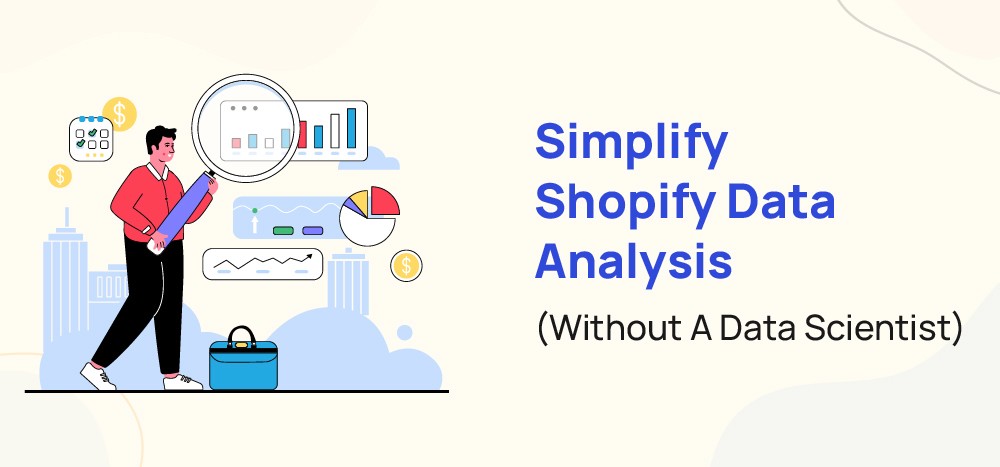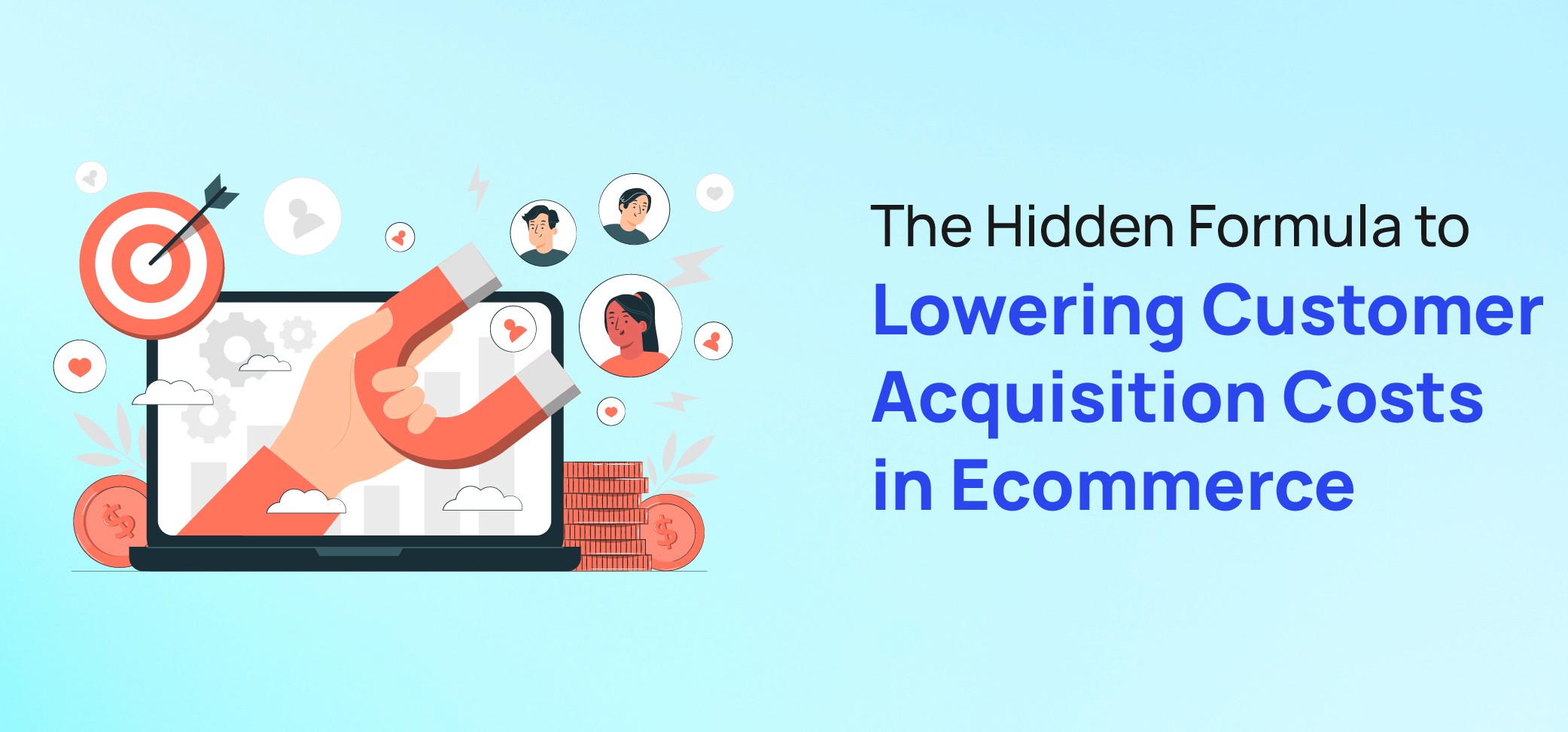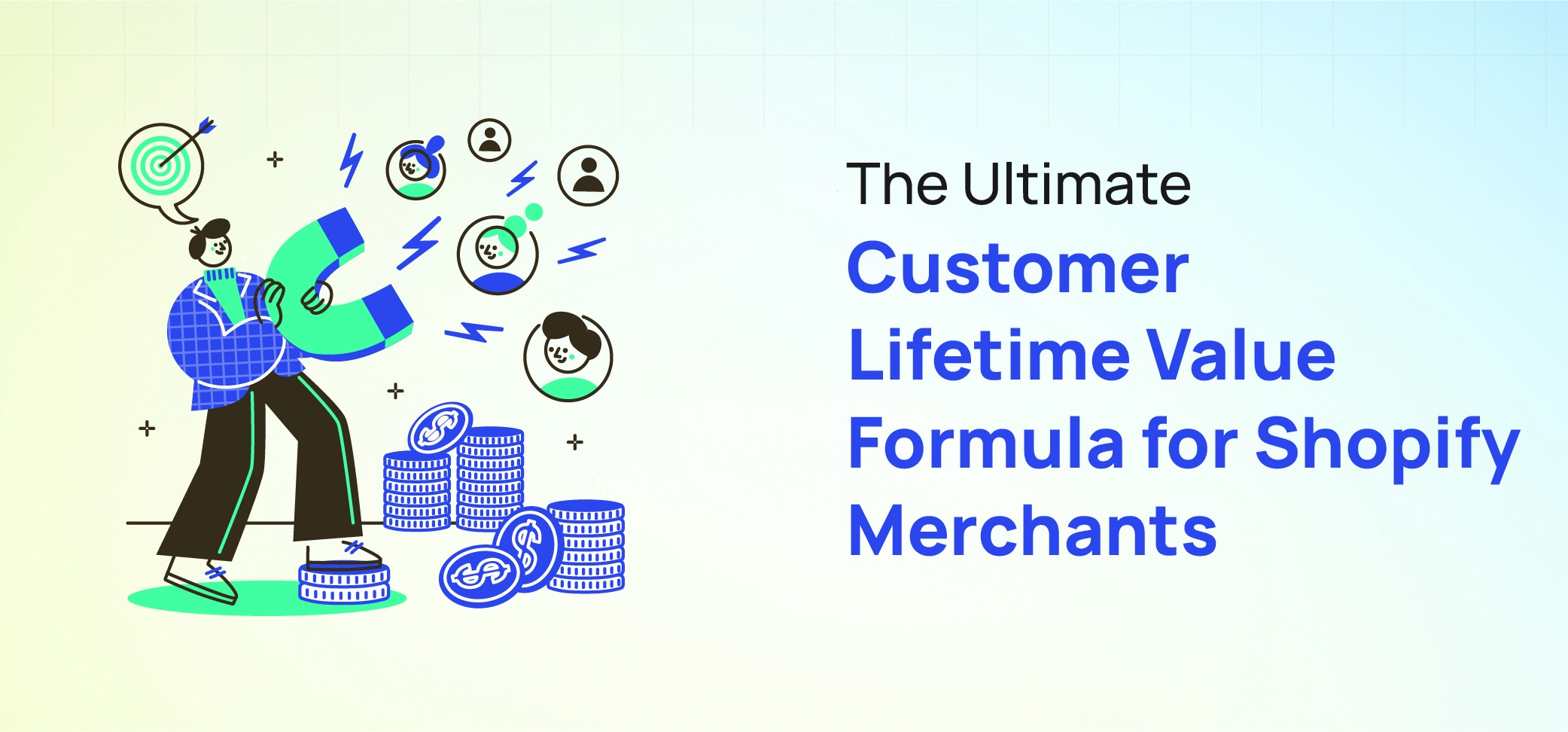
5 Proven Strategies to Minimize Shopify Customer Acquisition Costs
Learn how to calculate CAC for your Shopify store and reduce Customer Acquisition Cost with these proven methods.
Nov 1, 2024
Over the last 10 years, the ecommerce industry has witnessed significant changes in its infrastructure, leading to remarkable ecommerce sales growth. Today, brands are drastically shifting their strategies to meet consumer expectations and preferences.
Research by Statista confirms that D2C (Direct To Consumer) ecommerce sales across the US are projected to hit $182.62 billion in 2023. Despite this growth, expensive customer acquisition costs (CAC) continue to be a major challenge for brands. Many ecommerce owners find themselves in a situation where Shopify CAC exceeds the lifetime value of customers (LTV) they acquire.
This trend indicates that the costs incurred while acquiring customers are rising higher than the amount those customers spend at retailers, resulting in wasted marketing efforts. Optimization of marketing efforts is crucial to ensure that CAC remains sustainable and does not outpace LTV.
However, any business engaged in ecommerce can dramatically boost its net income by reducing customer acquisition costs and achieving an ideal balance between LTV and CAC. Understanding the LTV to CAC ratio is essential for assessing the health of your marketing strategies. This article will discuss CAC, how to calculate it effectively through CAC calculation, and explore five strategies that you can implement as part of your customer retention strategy to keep these costs under control. Additionally, we’ll touch on important topics such as how to handle chargebacks on Shopify and leveraging traffic insights to enhance sales.
What is Customer Acquisition Cost (CAC)?
Customer Acquisition Cost (CAC) is the total sum of marketing expenses needed to gain a new client. This metric is crucial for any business looking to understand the effectiveness of their marketing strategies. CAC includes the costs associated with acquiring customers and the ongoing value of optimizing a customer's lifetime value (CLV). Understanding the Customer Acquisition Cost definition is essential for effective financial planning and marketing expenses analysis.
The cost of acquiring customers can be divided into two main CAC components: 1) the cost involved in finding a customer through various Traffic Sources; and 2) converting a customer lead into a paid customer.
Once you’ve acquired customers, here’s how you can use the CAC calculation formula:
Customer Acquisition Cost = Total marketing spend / Total number of new customers
Suppose you’ve spent $10,000 on a marketing campaign and you’ve acquired 200 new customers; your per customer acquisition cost is $50. If each customer, over their lifetime with your business, generates $150 in revenue, then your LTV to CAC ratio explanation is 3:1 (150/50), or three times Customer Acquisition Cost. If your ecommerce operation has an LTV ratio of 3X or greater above CAC, you’re headed in the right direction. This indicates that your marketing campaign ROI is healthy and sustainable.
However, if your LTV to CAC ratio is less than 3, then you may have to work on your customer retention strategy importance. A strong retention strategy ensures that customers remain engaged and continue generating revenue over time. Now let’s look at the 5 techniques you can apply to reduce your customer acquisition costs while maintaining quality leads:
How can eCommerce brands keep CAC under control?
Maintaining control over Customer Acquisition Cost (CAC) is crucial for eCommerce brands aiming for sustainable growth. Implementing effective eCommerce CAC control strategies can make a significant difference in your overall marketing efficiency improvement.
One of the key approaches is to focus on customer retention techniques that ensure repeat purchases, thereby reducing the need for constant new customer acquisition. Additionally, exploring CAC reduction methods such as optimizing Marketing Activities and analyzing channel performance reports can help identify which channels deliver the best return on investment.
It's also essential to be aware of factors like chargebacks when managing CAC. Understanding chargeback disputes, especially those related to credit card transactions with providers like Visa and Mastercard, can prevent unexpected losses that inflate acquisition costs.
By integrating these strategies, eCommerce brands can effectively keep their CAC under control while fostering a loyal customer base.
Reduce Customer Churn
The rate of customer churn (or customer turnover) is excessive across many ecommerce companies, and it’s a primary reason why customer acquisition costs are so high, especially for those using platforms like Shopify. A high churn percentage indicates that although a retailer may constantly acquire new customers, it’s not able to keep them active for long periods of time. This challenge makes effective customer retention strategies essential.
As an ecommerce merchant, having an effective customer retention strategy is the best way to prevent churn. By implementing tools for managing chargebacks and utilizing comprehensive customer data analysis, you can gain valuable insights into your customers' behaviors and needs.
You can use applications such as Bloom Analytics to analyze your existing customer data, deriving insights about which customer segments may become ideal customers in the future. Based on this data, you can formulate a growth strategy by identifying targeted marketing segments that require specific attention. For instance, if your most valuable customers are likely to leave for other brands or categories of products within a short time after being acquired, then it’s best to prioritize them by creating discount loyalty campaigns. These campaigns can help reinforce their loyalty and reduce the risk of customer churn.
Additionally, consider integrating a chargeback management solution to streamline the process and minimize losses associated with dissatisfied customers. Regularly reviewing Reports such as campaign attribution reports can also help you assess the effectiveness of your marketing efforts and adjust your strategies accordingly.
Work on Your Customer Feedback ASAP
When it comes to brand advocacy through customers, your customers take the top spot. If they had a great experience with your brand, they’ll introduce you to their near and dear friends, industry colleagues, social followers, and family members. In fact, they’re the force behind a wave of future referral opportunities.
Therefore, quickly responding to their direct customer feedback is important while resolving their issues with dexterity makes them feel valued and heard. This increases their customer loyalty enhancement, perhaps inspiring them to become your brand's ambassadors, which will greatly lower the Customer Acquisition Cost (CAC). Just remember: referred customers typically have a higher LTV (Lifetime Value) due to lower acquisition costs and peer-based brand trust.
Also, never forget to thank your loyal customers with rewards and encourage them to share the latest news about your brand.
Utilizing CSAT (Customer Satisfaction Score) and NPS (Net Promoter Score) surveys can help you strengthen customer relationships. These CSAT and NPS surveys are essential for understanding Shopify marketing metrics and engaging your customers for the long haul. Any well-designed survey tools for engagement can help you maintain strong connections while reducing chargeback cases by providing evidence for chargebacks when necessary.
Make the First Best Impressions
The customer onboarding process is a crucial factor that affects whether a customer will return to your store. It’s the introduction to your brand that can make or break repeat purchases. However, many ecommerce stores struggle with first impressions in ecommerce, often failing to create effective onboarding experiences.
Pain points in the onboarding journey might include a confused first-time user experience, tedious steps that hinder transaction completion ease, missing self-guided help documentation, and intrusive marketing messages that are more annoying than persuasive. To prevent such poor customer experiences, it’s essential to optimize user experience by devising a smooth onboarding journey: make signing up easy without asking for too much information.
Utilize interactive screen tips to lessen navigational friction and, if necessary, implement tutorials for user interface awareness that guide users through your platform effectively. By providing the best customer experience in the shortest time possible, you can help buyers reach that "aha" moment when they’re ready to purchase. Additionally, consider how these elements impact your overall marketing performance indicators and keep in mind the importance of analyzing customer acquisition costs in Shopify as you refine your strategies.
By ensuring a seamless customer onboarding process, you not only enhance satisfaction but also significantly influence repeat purchases and build lasting relationships with your clients.
Reduce Cart Abandonment with an Effective Cart Abandonment Strategy
A well-planned cart abandonment strategy is one of the best ways to increase customer retention and improve purchase conversion rates. By doing so, you can significantly cut down the costs associated with customer acquisition, such as those reflected in Shopify CAC metrics. Helpful tip: purchase conversion rates for abandoned cart emails are 10% higher than more traditional marketing emails, showcasing the effectiveness of abandoned cart emails.
When a buyer goes through the effort of adding items to their shopping cart, it’s increasingly likely they’ve considered making a purchase. All they require is a gentle nudge—this is where personalized cart recovery tactics come into play. Sending relevant and tailored cart abandonment emails can effectively encourage them to complete their transaction.
These emails should highlight key elements such as: product highlights in emails that showcase the items remaining in the cart, enticing discount offers in cart emails to motivate purchases, and notifications about out-of-stock items that are now available. By engaging customers with well-crafted cart abandonment messages, you not only encourage them to finalize their purchases but also enhance their overall shopping experience. Additionally, consider integrating chargeback recovery software to further streamline your financial processes while reviewing marketing performance in Shopify admin.
Improve Average Order Value (AOV) using Cross-Selling Techniques
Cross-selling techniques are a great method to increase sales, boost revenue, and meet growth objectives. By using contextual product prompts, you can show related product recommendations that potential customers might like as they browse your listings. The goal here is to ensure buyers remain on product pages and eventually add more items to their shopping cart. Boosting Average Order Value (AOV) is the name of this game.
You can use a wide range of products offered at your store and cross-sell them depending on the customer's requirements, similar customer purchase behavior, and even the IP-based geographic location of their internet connection. This approach not only enhances the Online Store Conversion Rate but also ensures that you are effectively utilizing transaction details to tailor your offerings.
Additionally, by conducting customer lifetime value analysis and revenue data utilization, you can identify your most profitable customers with the intention to cross-sell them related products. Cross-selling also helps increase customer lifetime value, which negates customer retention vs acquisition costs. Remember, customer retention is far cheaper than acquiring new customers. It's also easier to keep an engaged customer rather than constantly seeking new ones. Effective customer communication plays a vital role in this process, ensuring that your clients are aware of the benefits of additional purchases as they navigate your store.
By accessing traffic insights for your Shopify store, you can refine your cross-selling strategies further and ensure that each interaction leads to a meaningful increase in average order value.
Make Necessary Decisions to Reduce Your CAC - Use Bloom Analytics for CAC Reduction to Decrease Decision Making Time
Customer acquisition costs (CAC) can be a significant challenge for ecommerce retailers, especially those using platforms like Shopify. However, by optimizing your customer retention strategies, you can offset those costs and increase revenue.
Concentrating on interactive onboarding processes, personalized messaging strategies, targeted cross-selling techniques, user churn prevention, and loyal customer rewards will lessen the impact of customer acquisition and boost customer retention. These tactics are essential for effective customer retention optimization.
You can use applications such as Bloom Analytics to make data-backed decisions that improve your customer retention and reduce customer acquisition costs. By analyzing your Average Order Value (AOV) and learning about attribution models for marketing activities, you can create a comprehensive marketing summary that guides your strategies effectively.
Sign up for our free trial today and make informed decisions about your customer acquisition and retention strategy!
March 21, 2025
March 20, 2025
March 20, 2025
March 20, 2025
March 17, 2025
March 14, 2025
March 14, 2025
March 13, 2025
March 12, 2025
March 12, 2025
March 12, 2025
March 4, 2025
March 4, 2025
February 28, 2025
February 5, 2025
January 31, 2025
November 12, 2024
October 22, 2024



















